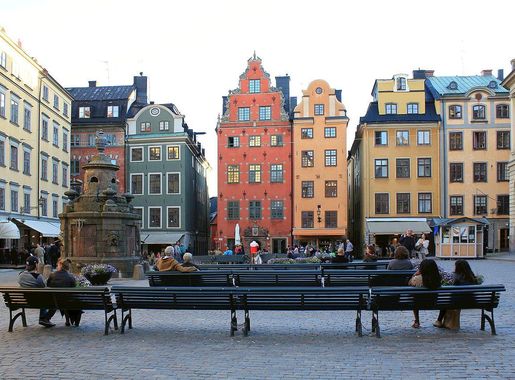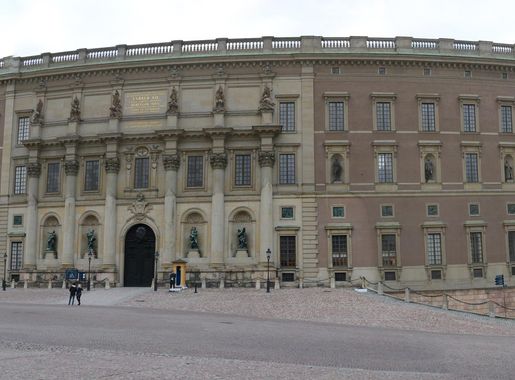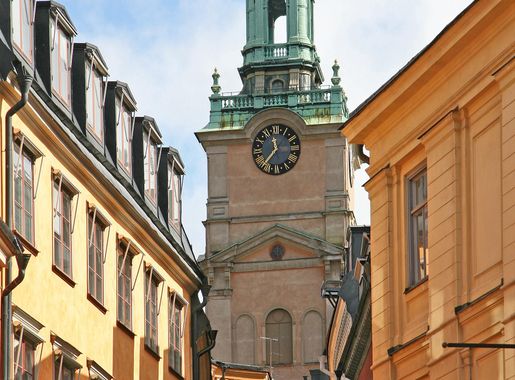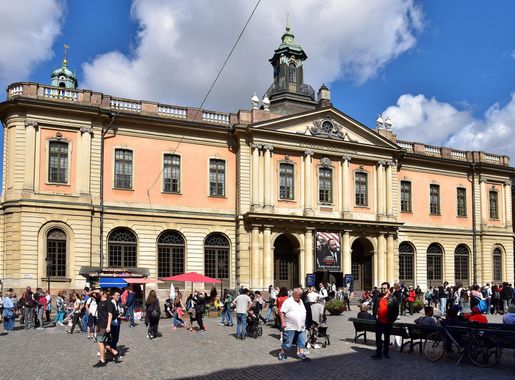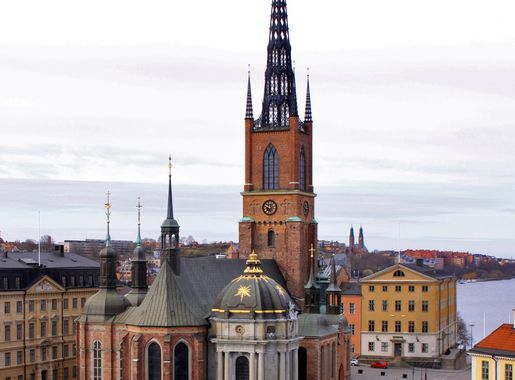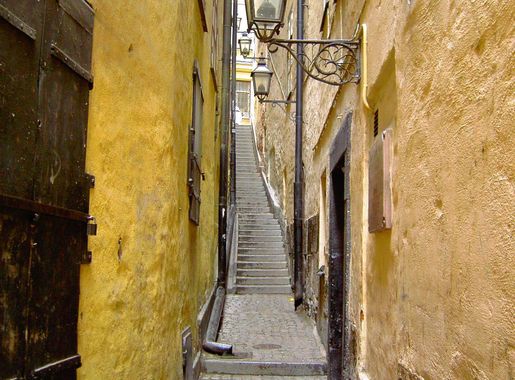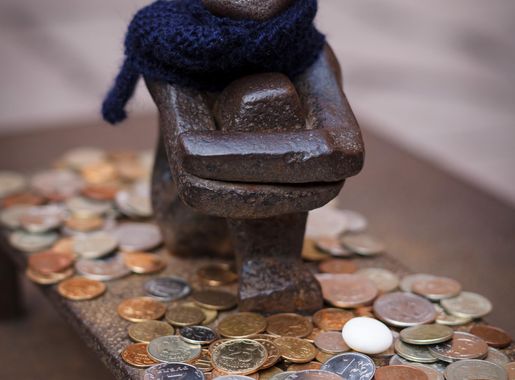
Gamla Stan: The Heartbeat of Stockholm's History
Explore Gamla Stan, Stockholm's enchanting Old Town, where medieval charm meets modern vibrancy. Discover historic landmarks, quaint cafés, and hidden alleyways.
Gamla Stan, the Old Town of Stockholm, is a mesmerizing labyrinth of cobblestone streets, medieval buildings, and colorful facades. Founded in 1252, this historic neighborhood is one of the best-preserved medieval city centers in Europe. As you wander through its narrow alleyways, you'll be transported back in time, marveling at the architectural splendor and the rich tapestry of history that Gamla Stan offers. Begin your journey at Stortorget, the main square, where you'll find the Nobel Museum and the iconic brightly colored townhouses. This vibrant square is a hub of activity, surrounded by charming cafés and shops that sell traditional Swedish crafts and souvenirs. The Royal Palace, one of the largest palaces in Europe, is also located in Gamla Stan. Don't miss the daily Changing of the Guard ceremony, a spectacle of Swedish tradition and military precision. As you explore further, you'll discover hidden gems like the narrowest alley in Stockholm, Mårten Trotzigs Gränd, which is just 90 centimeters wide. Visit the ancient churches such as Storkyrkan, Stockholm's Cathedral, home to the stunning wooden statue of Saint George and the Dragon. Gamla Stan is also a culinary delight, offering everything from classic Swedish dishes in historic taverns to modern cuisine in stylish restaurants. Gamla Stan is more than just a historical site; it's a living, breathing part of Stockholm. Its blend of old-world charm and modern vibrancy makes it an unmissable destination for any traveler seeking to experience the true essence of the Swedish capital.
Local tips in Gamla Stan
- Wear comfortable shoes; the cobblestone streets can be tricky to navigate.
- Visit early in the morning or late in the afternoon to avoid the crowds.
- Check the schedule for the Changing of the Guard at the Royal Palace to plan your visit.
- Take a guided walking tour for deeper insights into the history and legends of Gamla Stan.
- Don't miss trying traditional Swedish Fika at one of the local cafés.
Gamla Stan: The Heartbeat of Stockholm's History
Gamla Stan, the Old Town of Stockholm, is a mesmerizing labyrinth of cobblestone streets, medieval buildings, and colorful facades. Founded in 1252, this historic neighborhood is one of the best-preserved medieval city centers in Europe. As you wander through its narrow alleyways, you'll be transported back in time, marveling at the architectural splendor and the rich tapestry of history that Gamla Stan offers. Begin your journey at Stortorget, the main square, where you'll find the Nobel Museum and the iconic brightly colored townhouses. This vibrant square is a hub of activity, surrounded by charming cafés and shops that sell traditional Swedish crafts and souvenirs. The Royal Palace, one of the largest palaces in Europe, is also located in Gamla Stan. Don't miss the daily Changing of the Guard ceremony, a spectacle of Swedish tradition and military precision. As you explore further, you'll discover hidden gems like the narrowest alley in Stockholm, Mårten Trotzigs Gränd, which is just 90 centimeters wide. Visit the ancient churches such as Storkyrkan, Stockholm's Cathedral, home to the stunning wooden statue of Saint George and the Dragon. Gamla Stan is also a culinary delight, offering everything from classic Swedish dishes in historic taverns to modern cuisine in stylish restaurants. Gamla Stan is more than just a historical site; it's a living, breathing part of Stockholm. Its blend of old-world charm and modern vibrancy makes it an unmissable destination for any traveler seeking to experience the true essence of the Swedish capital.
Iconic landmarks you can’t miss
The Royal Palace
Explore the royal heritage and architectural beauty of The Royal Palace in Stockholm, a must-see historical landmark and museum.

Stortorget (The Main Square)
Discover the vibrant history of Stockholm at Stortorget, the main square brimming with medieval charm and captivating architecture.

Stockholm's narrowest street (Mårten Trotzigs gränd)
Experience the magic of Mårten Trotzigs Gränd, Stockholm's narrowest street, and immerse yourself in the city's historic charm and vibrant culture.

Iron Boy - Boy watching the moon
Discover the magic of Iron Boy, a whimsical sculpture in Stockholm that embodies dreams and nostalgia under the moonlight.
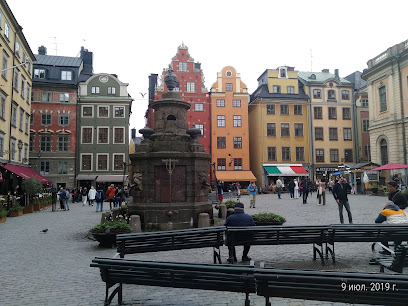
St George and the Dragon Statue
Explore the iconic St George and the Dragon Statue in Stockholm, a beautiful blend of history, art, and culture in the heart of Gamla Stan.
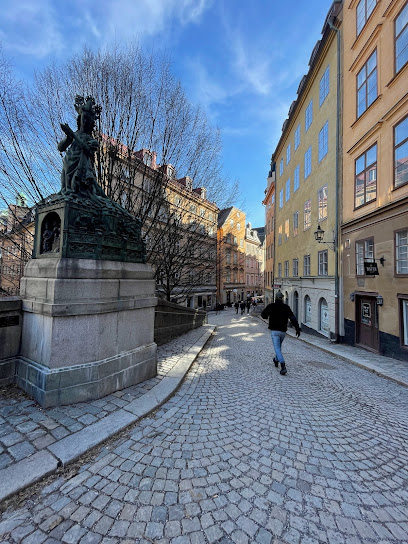
Stockholm Ghost Walk AB
Explore Stockholm's chilling history on the Ghost Walk, where eerie tales and haunted sites come to life in this captivating night tour.

Västerlångatan
Explore Västerlånggatan, Stockholm's historic street filled with charming shops, cafes, and a vibrant atmosphere, perfect for immersing in local culture.

The cannon ball in Gamla Stan
Explore the historic Cannon Ball in Gamla Stan, a unique landmark reflecting Stockholm's rich past and architectural beauty.
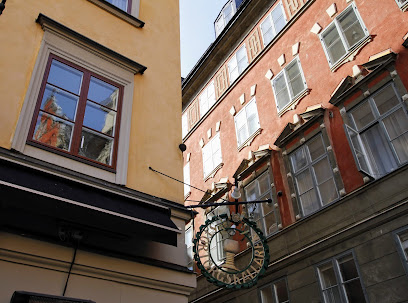
Kinneviksgranen
Explore Kinneviksgranen, a scenic waterfront gem in Stockholm, where culture meets stunning views in the heart of Sweden's capital.

Ryning's Palace
Discover the grandeur of Ryning's Palace, a stunning castle in Stockholm that embodies Sweden's rich royal history and architectural elegance.
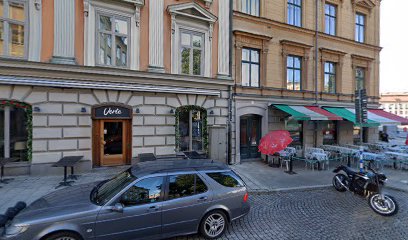
Unmissable attractions to see
Kungsträdgården
Explore Kungsträdgården, a stunning park in Stockholm, known for its cherry blossoms, vibrant atmosphere, and cultural events throughout the year.

Stockholm Medieval Museum
Discover the fascinating history of Stockholm at the Medieval Museum, where the past comes alive through captivating exhibits and artifacts.
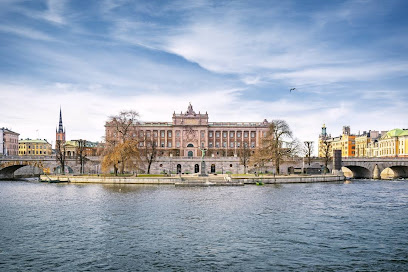
The Royal Armoury
Discover the rich history of Sweden at The Royal Armoury, home to a stunning collection of royal artifacts and military treasures in Stockholm.
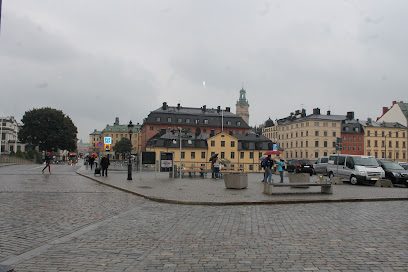
Stortorget (The Main Square)
Explore the vibrant history and culture of Stockholm at Stortorget, the city's iconic main square surrounded by stunning architecture and lively local life.
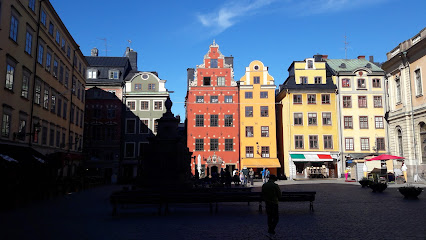
St George and the Dragon Statue
Discover the legendary St George and the Dragon Statue in Gamla Stan, a stunning bronze sculpture steeped in history and charm.

Homeless Fox Statue
Explore the touching Homeless Fox Statue in Stockholm, a poignant sculpture that captures the essence of urban life and artistic expression.

Takvandring Sverige AB
Explore Stockholm's breathtaking rooftops with Takvandring for a unique perspective on Sweden's capital city.
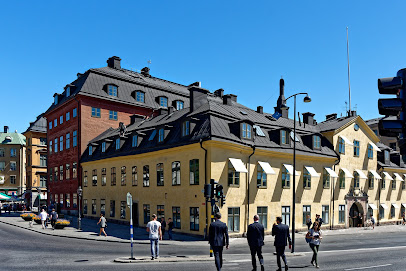
Järntorgsbrunnen
Explore Järntorgsbrunnen in Stockholm, a serene fountain that offers a perfect blend of history, culture, and relaxation in the heart of the city.
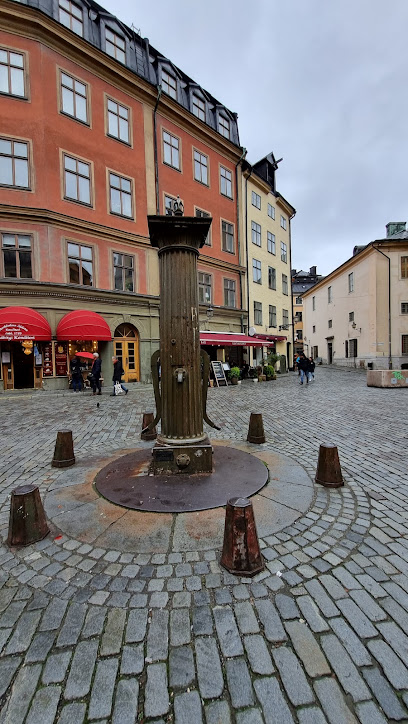
Wasserbus-City guide
Discover the charm of Stockholm from the water with the Wasserbus, an eco-friendly transport connecting you to the city's iconic sights.

Kinneviksgranen
Discover Kinneviksgranen, a scenic gem in Stockholm where history meets stunning waterfront views, perfect for leisurely strolls and vibrant local culture.
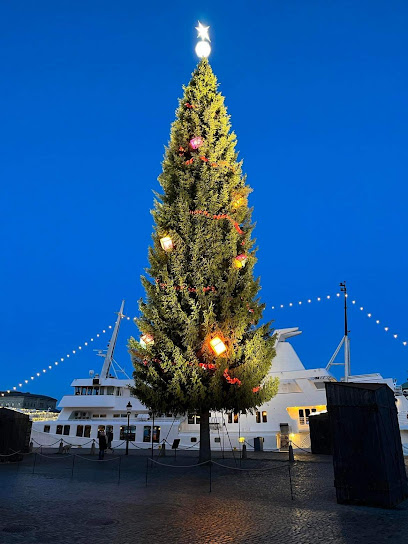
Essential places to dine
Aifur
Experience authentic Scandinavian cuisine at Aifur in Stockholm - where tradition meets taste in an unforgettable atmosphere.
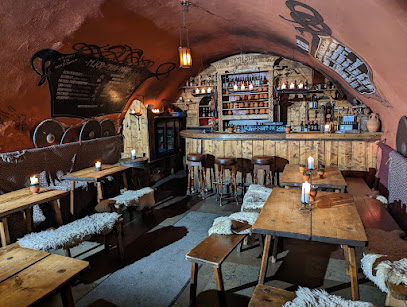
Stockholms Gästabud
Discover authentic Swedish cuisine at Stockholms Gästabud – where tradition meets taste in the heart of Stockholm.
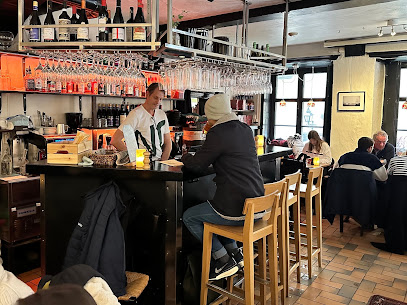
Restaurant Tradition
Experience authentic Swedish flavors at Restaurant Tradition in Stockholm - where tradition meets taste in every dish.
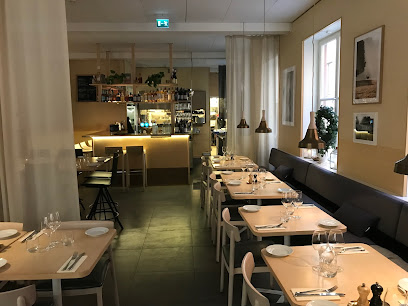
Restaurang Agaton
Experience authentic Italian cuisine at Restaurang Agaton in Stockholm - where every dish tells a story of tradition and flavor.
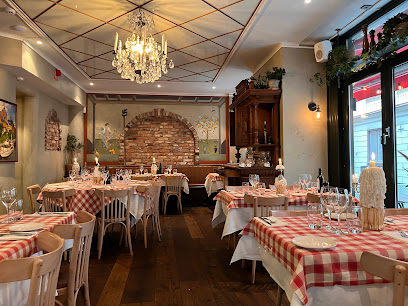
Slingerbulten
Experience authentic Swedish cuisine in a charming setting at Slingerbulten in Stockholm – where tradition meets modern flavor.
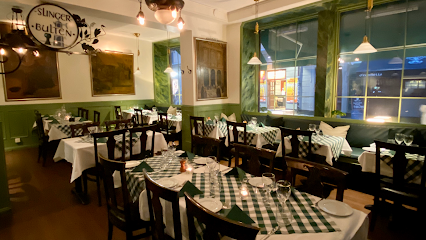
Restaurang Kryp In
Experience authentic Swedish cuisine at Restaurang Kryp In - where tradition meets modern elegance in Stockholm's finest dining.
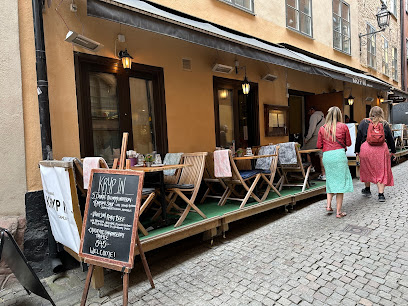
The Hairy Pig Restaurant
Experience authentic Swedish cuisine in a cozy atmosphere at The Hairy Pig Restaurant - a must-visit culinary destination in Stockholm.
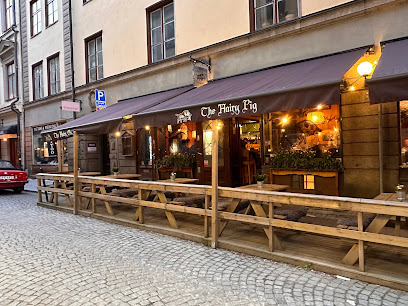
Den Gyldene Freden
Experience authentic Swedish cuisine at Den Gyldene Freden - where tradition meets modernity in Stockholm's historic dining scene.
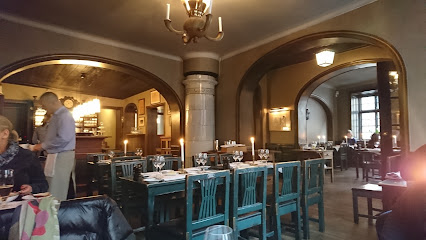
FIKA & WINE
Experience authentic Swedish cuisine at FIKA & WINE in Stockholm, where tradition meets modernity in a cozy atmosphere.
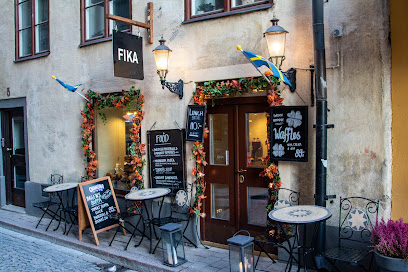
GAMLA STAN HOF
Discover the taste of Sweden at Gamla Stan Hof – a must-visit restaurant in Stockholm's charming Old Town.
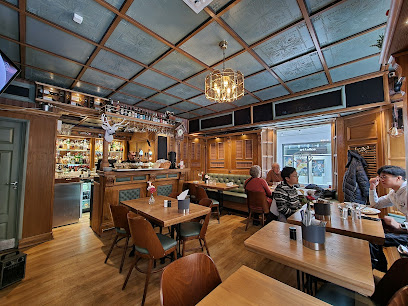
Markets, malls and hidden boutiques
The Science Fiction Bookstore
Explore the enchanting universe of literature at The Science Fiction Bookstore in Stockholm, where every corner reveals a new adventure waiting to be discovered.
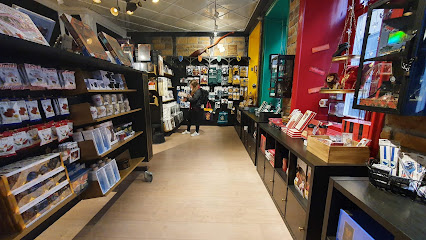
Handfaste The Viking Shop
Explore authentic Viking jewelry and artifacts at Handfaste The Viking Shop in Stockholm, a must-visit for history enthusiasts and souvenir seekers alike.

The Old Town Souvenir
Explore a treasure trove of authentic Swedish souvenirs at The Old Town Souvenir, a must-visit for tourists in Stockholm's historic heart.
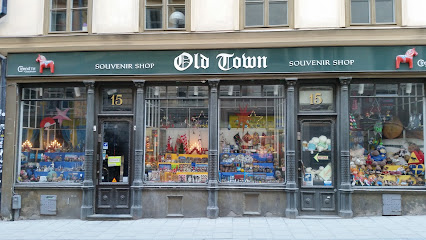
Indus The Gift Shop
Discover unique Swedish souvenirs, children's clothing, and festive gifts at Indus The Gift Shop in Stockholm's historic center.
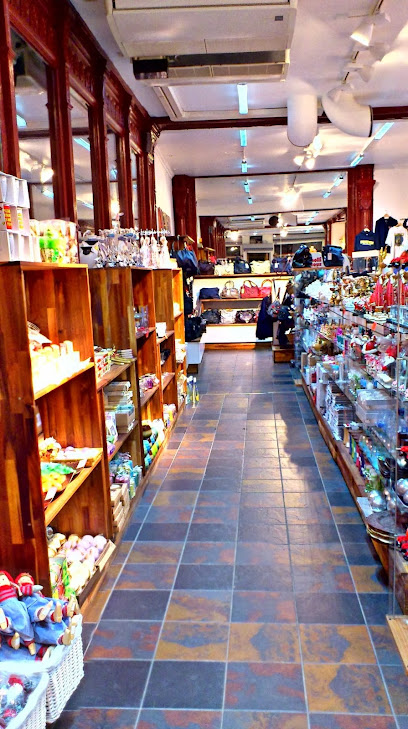
Theodore's Home
Discover unique Swedish souvenirs and local crafts at Theodore's Home, a charming store on Västerlånggatan in the heart of Stockholm.
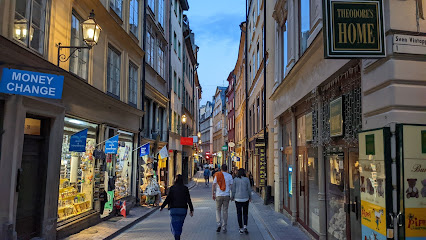
Dala Shop
Explore Dala Shop in Stockholm for unique gifts and authentic Swedish crafts that embody the spirit of Sweden's rich artistic heritage.
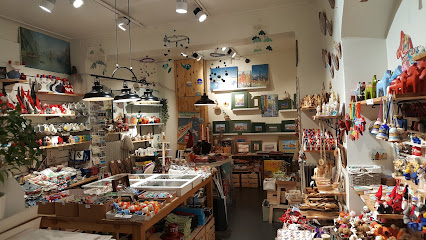
EYE SHUT ISLAND
Explore Eye Shut Island: A Cultural Center and Gift Shop in Stockholm Offering Unique Souvenirs and Local Artistry.
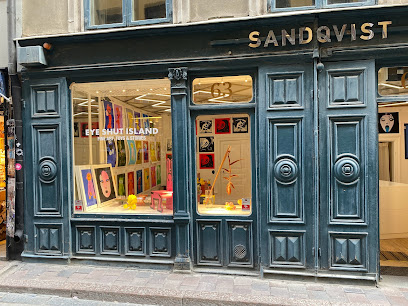
Mats Jonasson Concept Store
Explore Mats Jonasson Concept Store in Stockholm for exquisite glassware and needlework, showcasing the finest of Swedish craftsmanship.
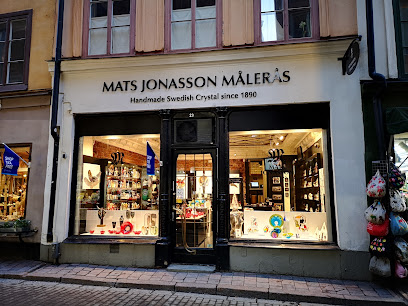
The Palace
Explore a delightful array of authentic Swedish souvenirs at The Palace, a must-visit destination for tourists in Stockholm.
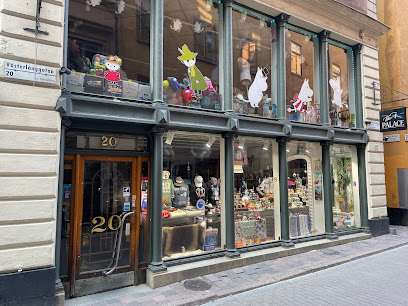
Art & craft
Discover exquisite local crafts and unique gifts at Art & Craft, a charming shop in the heart of Stockholm, perfect for tourists seeking authentic souvenirs.

Essential bars & hidden hideouts
Wirströms Pub
Immerse yourself in Irish culture at Wirströms Pub, Stockholm's lively venue for authentic drinks, live music, and sports entertainment.
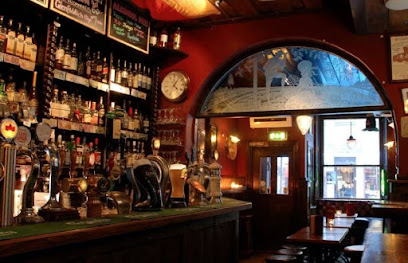
O’Connell’s Irish Pub
Discover the spirit of Ireland in Stockholm at O’Connell’s Irish Pub, where hearty dishes and lively atmosphere await you.
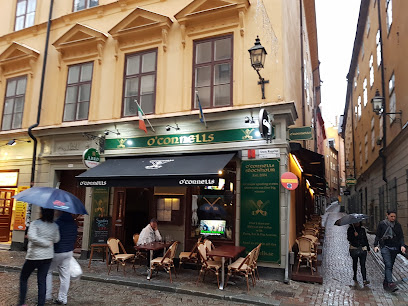
Pharmarium
Discover Pharmarium, a chic cocktail bar in Stockholm's historic Stortorget, where innovative drinks meet a cozy atmosphere.
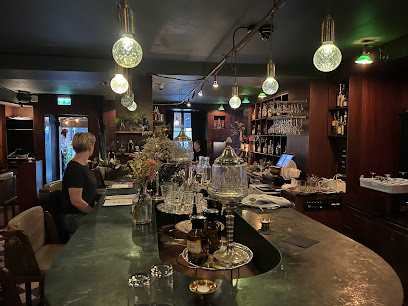
The Liffey
Experience authentic Irish hospitality at The Liffey, Stockholm's premier Irish bar with delicious food, craft drinks, and a vibrant atmosphere.

The Temple Bar
Discover the vibrant atmosphere of The Temple Bar in Stockholm, where traditional Swedish fare meets a lively pub experience.
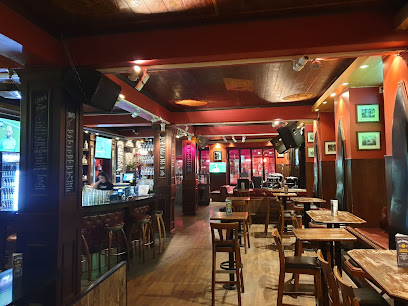
Bishop Arms Gamla Stan
Experience the heart of Stockholm at Bishop Arms Gamla Stan, where traditional Swedish cuisine meets a vibrant gastropub atmosphere.

Corner Club
Experience innovative cocktails and a vibrant atmosphere at Corner Club, Stockholm's premier cocktail bar for a night to remember.

International Bar Gamla Stan
Experience the vibrant nightlife of Stockholm at International Bar Gamla Stan, where history meets lively gatherings in the heart of the city.
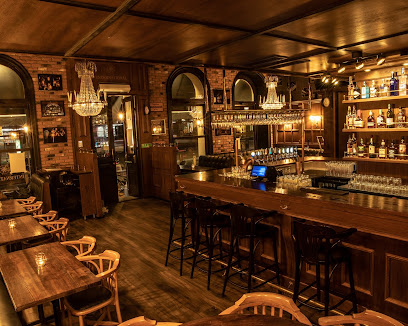
Corner Bar
Discover the charm of Corner Bar in Stockholm, a cozy spot for drinks and local culture amidst the city's vibrant nightlife.
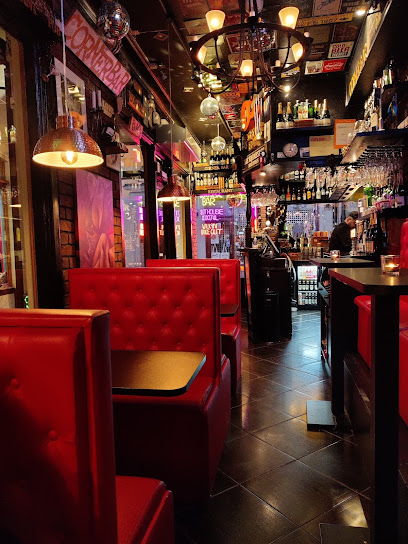
Bar Brahe
Experience the vibrant atmosphere of Bar Brahe, a cozy bar in Stockholm offering expertly crafted cocktails and local brews.
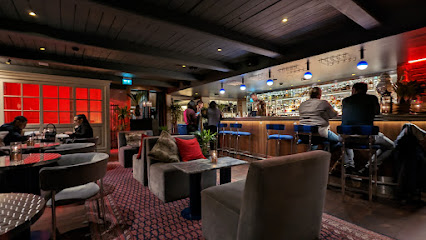
Local Phrases
-
- HelloHej
[hey] - GoodbyeAdjö
[ad-yoo] - YesJa
[ya] - NoNej
[nay] - Please/You're welcomeSnälla
[snell-la] - Thank youTack
[tahck] - Excuse me/SorryUrsäkta
[oor-sake-ta] - How are you?Hur mår du?
[hur mor doo] - Fine. And you?Bra. Och du?
[bra. ockh doo] - Do you speak English?Talar du engelska?
[tah-lar doo eng-gels-ka] - I don't understandJag förstår inte
[yahg for-stor in-te]
- HelloHej
-
- I'd like to see the menu, pleaseJag skulle vilja se menyn, tack
[yahg skool-le vil-ya se men-in, tahck] - I don't eat meatJag äter inte kött
[yahg ate-er in-te chot] - Cheers!Skål!
[skohl] - I would like to pay, pleaseJag skulle vilja betala, tack
[yahg skool-le vil-ya be-tah-la, tahck]
- I'd like to see the menu, pleaseJag skulle vilja se menyn, tack
-
- Help!Hjälp!
[yelp] - Go away!Gå iväg!
[goh iv-ayg] - Call the Police!Ring polisen!
[ring po-lee-sen] - Call a doctor!Ring en läkare!
[ring en leh-ka-re] - I'm lostJag är vilse
[yahg air vil-se] - I'm illJag är sjuk
[yahg air shoo-k]
- Help!Hjälp!
-
- I'd like to buy...Jag skulle vilja köpa...
[yahg skool-le vil-ya cher-pa] - I'm just lookingJag tittar bara
[yahg tee-tar ba-ra] - How much is it?Hur mycket kostar det?
[hur my-ket kost-ar det] - That's too expensiveDet är för dyrt
[det air for deert] - Can you lower the price?Kan du sänka priset?
[kan doo sank-a pre-sit]
- I'd like to buy...Jag skulle vilja köpa...
-
- What time is it?Vad är klockan?
[vad air klok-kan] - It's one o'clockKlockan är ett
[klok-kan air at] - Half past (10)Halv (tio)
[halv (tee-oh)] - MorningMorgon
[mor-gon] - AfternoonEftermiddag
[ef-ter-mee-dag] - EveningKväll
[kvel] - YesterdayIgår
[ee-gor] - TodayIdag
[ee-dag] - TomorrowImorgon
[ee-mor-gon] - 1En
[en] - 2Två
[tvo] - 3Tre
[tre] - 4Fyra
[fy-ra] - 5Fem
[fem] - 6Sex
[sex] - 7Sju
[shoo] - 8Åtta
[ot-ta] - 9Nio
[nee-o] - 10Tio
[tee-o]
- What time is it?Vad är klockan?
-
- Where's a/the...?Var är en/the...?
[var air en/the] - What's the address?Vad är adressen?
[vad air ad-dress-en] - Can you show me (on the map)?Kan du visa mig (på kartan)?
[kan doo vee-sa may (po kar-tan)] - When's the next (bus)?När går nästa (buss)?
[nair gor nes-ta (boos)] - A ticket (to ....)En biljett (till ....)
[en bil-yet (till)]
- Where's a/the...?Var är en/the...?
History of Gamla Stan
-
Gamla Stan, the oldest part of Stockholm, was founded in the mid-13th century, primarily around the year 1252. It began as a small trading post known as 'Stockholm,' named after the 'stock' (logs) placed in the water to create a barrier against enemy ships. Its strategic location on the island of Stadsholmen facilitated trade between Sweden and the Hanseatic League, fostering early economic growth.
-
With the establishment of the city, Gamla Stan became the political and cultural heart of Sweden. By the late 14th century, it gained prominence as the site of the Swedish Parliament and royal ceremonies. The Storkyrkan Cathedral, built in the 13th century, served as a central place of worship and is a testament to the area’s medieval architecture.
-
In 1625, a devastating fire swept through Gamla Stan, destroying a significant portion of the old town. This tragedy led to a reconstruction effort that introduced wider streets and more fireproof buildings, marking a shift in urban planning. The rebuilding phase saw the emergence of Baroque architecture, which can still be admired in the district today.
-
Gamla Stan has been the site of royal residence since the 16th century, with the Royal Palace (Kungliga Slottet) serving as the official residence of the Swedish monarch. The palace, built on the site of the older Tre Kronor castle, embodies centuries of royal history and architectural evolution, showcasing styles from Neoclassical to Baroque.
-
Throughout the 18th and 19th centuries, Gamla Stan evolved into a vibrant cultural hub. It became home to artists, writers, and intellectuals, contributing to Sweden's Golden Age of literature and arts. The area’s narrow cobblestone streets and picturesque buildings continue to inspire creativity and attract tourists interested in its rich artistic heritage.
-
Today, Gamla Stan remains a testament to Stockholm's history and culture, attracting millions of visitors annually. The area is renowned for its well-preserved medieval architecture, museums, and atmospheric cafés. Key highlights include the Nobel Museum, the Royal Palace, and the iconic Stortorget square, where the Stockholm Bloodbath took place in 1520, marking a significant event in Swedish history.
Gamla Stan Essentials
-
Gamla Stan, the historic heart of Stockholm, is easily accessible from various neighborhoods. If you're arriving from the central train station (Stockholm C), you can take the Tunnelbana (subway) to Gamla Stan Station, which is just a short walk from the main attractions. Buses also connect Gamla Stan with other parts of the city, with several lines stopping at nearby locations. For those coming from the airport, the Arlanda Express train takes you to the city center in about 20 minutes, followed by a quick transfer to the subway.
-
Gamla Stan is primarily a pedestrian zone, making walking the best way to explore its narrow, cobblestone streets. The area is compact, and most attractions are within walking distance. Public transport options include the Tunnelbana and buses, but they are rarely necessary for this neighborhood. Bicycles can be rented nearby, and some visitors enjoy cycling along the waterfront paths, but be mindful of the cobblestones in Gamla Stan.
-
Gamla Stan is generally a safe neighborhood for tourists. However, standard precautions should be taken. While pickpocketing can occur in crowded areas, such as busy squares or near major attractions, there are no specific high-crime areas targeting tourists. Be cautious of your belongings, especially in crowded spaces, and avoid dark alleys at night.
-
In case of emergency, dial 112 for immediate assistance. This number covers police, fire, and medical emergencies. The local police station is located within Gamla Stan, and there are several hospitals and clinics nearby. It’s advisable to have travel insurance in place for medical emergencies. Pharmacies are also available for minor health issues.
-
Fashion: Do dress appropriately, especially when visiting churches; smart casual attire is recommended. Don’t wear overly revealing clothing. Religion: Do respect local customs; when entering a church, speak softly and turn off your phone. Public Transport: Do give up your seat for elderly passengers. Don’t eat or drink on public transportation. Greetings: Do greet locals with a friendly 'Hej' (Hello). Don’t be overly loud or disruptive in public spaces. Eating & Drinking: Do try local specialties such as Swedish meatballs and cinnamon buns. Don’t leave your table without paying the bill; it’s customary to leave a tip of around 10% in restaurants.
-
To experience Gamla Stan like a local, take time to explore beyond the main tourist attractions. Visit small boutiques and artisan shops to find unique souvenirs. Attend a local café for Fika, a traditional Swedish coffee break, and sample local pastries. Join a guided walking tour to learn the history of the area from knowledgeable locals. Don’t miss the hidden gems like the narrowest street in Stockholm, Mårten Trotzigs Gränd, and the beautiful Stortorget square, especially during the Christmas market season.
Nearby Cities to Gamla Stan
-
Things To Do in Uppsala
-
Things To Do in Västerås
-
Things To Do in Norrköping
-
Things To Do in Örebro
-
Things To Do in Linköping
-
Things To Do in Visby
-
Things To Do in Karlstad
-
Things To Do in Turku
-
Things To Do in Kärdla
-
Things To Do in Kuressaare
-
Things To Do in Jönköping
-
Things To Do in Ventspils
-
Things To Do in Kalmar
-
Things To Do in Haapsalu
-
Things To Do in Kuldiga

